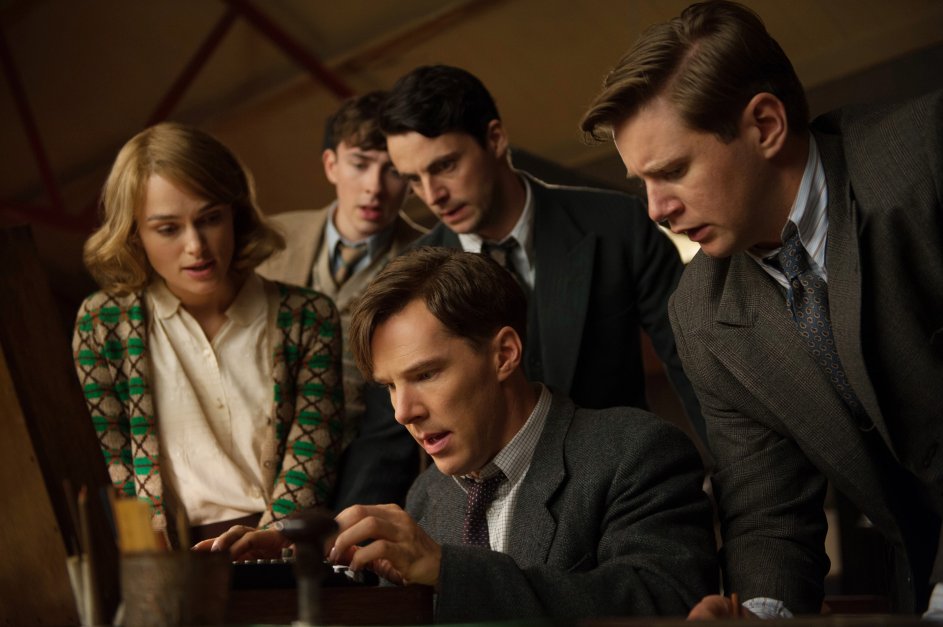Reflection of the week: Alan Turing
By Jesse van der Merwe,
Important things to know
About Alan Turing
Alan Turing (1912 – 1954) was a British mathematician. He studied at King’s College (now University of Cambridge) from 1931 to 1934 after which he was elected a fellow at the school due to his dissertation (in which he proved the central limit theorem) [3]. He is perhaps most well-known for his paper, written in 1936, “On Computable Numbers, with an Application to the Entsheidungsproblem” in which he presented his famed “Universal Turing Machine” (see below). Turing studied further in mathematics and cryptology and received his Ph.D. from Princeton University in 1938.
During World War II, Turing was most famed for deciphering the German Enigma encrypted signals, through the invention of the ‘bombe’ electromechanical device. According to biography.com:
He [Turing] also wrote two papers about mathematical approaches to code-breaking, which became such important assets to the Code and Cypher School (later known as the Government Communications Headquarters) that the GCHQ waited until April 2012 to release them to the National Archives of the United Kingdom. [3]Turing further explored the issue of artificial intelligence in a paper written in 1950 – “Computing machinery and intelligence” – in which he proposed an experiment known as the Turing Test [3] (see below).
Since Homosexuality was illegal in the United Kingdom in the early 1950s, Turing was arrested and charged with gross indecency.
Following his arrest, Turing was forced to choose between temporary probation on the condition that he receive hormonal treatment for libido reduction, or imprisonment. He chose the former, and soon underwent chemical castration through injections of a synthetic oestrogen hormone for a year, which eventually rendered him impotent.[3]Turing committed suicide on the 7th of June, 1954.
IT ONLY TOOK THE BRITTISH GOVERNMENT FIFTY-FIVE FUCKING YEARS FOR THE FOLLOWING TO OCCUR: Following a petition started by John Graham-Cumming, then-Prime Minister Gordon Brown released a statement on September 10, 2009, on behalf of the British government, which posthumously apologized to Turing for prosecuting him as a homosexual. [3]
AND THEN ANOTHER FOUR YEARS FOR THE BLOODY QUEEN: In 2013, Queen Elizabeth II posthumously granted Turing a rare royal pardon almost 60 years after he committed suicide. Three years later, on October 20, 2016, the British government announced “Turing’s Law” to posthumously pardon thousands of gay and bisexual men who were convicted for homosexual acts when it was considered a crime. According to a statement issued by Justice Minister Sam Gyimah, the law also automatically pardons living people who were “convicted of historical sexual offenses who would be innocent of any crime today. [3]
The Turing Machine
The Turing Machine is an abstract computer that reads and writes to an infinitely long tape. Symbols (such as 0 and 1) can be written and read from this tape. The machine can, at any stage, be in only one of a finite number of states. The next state is determined by what is read off the tape, as well as the rules that correspond to its current state.
For example, the finite state machine in the diagram has three states. If the machine is in state 1, then an A moves it to state 2 and a B moves it to state 3 [1] .
The Turing Machine, however, is capable of three types of actions [2]:
- Print the current state, move one square to the left and go to the next state
- Print the current state, move one square to the right and go to the next state
- Print the current state, do not move and go to the next state
In today’s academic language, a ‘Turing Machine’ does not refer to an actual machine, but rather to a system of rules, states and transitions. The field of Computer Science uses these machines as one of the most important formal models for theoretical computer science. The Church-Turing thesis states that “All computers are only as powerful as Turin machines. This can be used to prove if a problem is solvable by a computer or not”.
Computing Machinery and Intelligence Reflection
The Turing Test
The Turing Test refers to a proposal made by Alan Turing in his paper, “Computing Machinery
and Intelligence” written in 1952, in order to answer whether machines can think. According to
Turing, the question of whether machines can think or not is actually in itself “too
meaningless” to deserve discussion.[3]
Turing himself comes up with a new ‘question’ which can be described in terms of a game:
The “imitation game” is played with three people, a man (A), a woman (B), and an interrogator (C) who may be of either sex. The interrogator stays in a room apart from the other two. The object of the game for the interrogator is to determine which of the other tow is the man and which is the woman. He knows them by labels X, and Y, and at the end of the game he says either “X is A and Y is B” or “X is B and Y is A”. The interrogator is allowed to put questions to A and B. It is A’s object in the game to try and cause C to make the wrong identification. The object of the game for B is to help the interrogator. We now ask the question, “What will happen when a machine takes the part of A in this game?” Will the interrogator decide wrongly as often when the game is played like this as he does when the game is played between a man and a woman? These questions replace our original, “Can machines think?”[4]
Turing goes on to describe the “Universality of Digital Computers” and mentions how important machines and modern digital computers are currently and (more importantly) are going to be.
Contrary Views on the Main Question
This leads on to him heavily critiquing this new question/problem (the “Imitation Game”), from many angles. He starts by mentioning that it would be pointless to try and perfectly imitate a human (skin and all) and that this would reflect in his test by ensuring the interrogator was always in another room, and did not have any contact with either players (i.e. either through printed answers, or a ‘middle man’). Further arguments against the Turing Test are thoroughly examined, and a counterargument is presented (if Turing felt necessary). A few of these such arguments are mentioned below:
The Theological Objection
Turing quotes an unknown source saying “Thinking is a function of man’s immortal soul. God has given an immortal soul to every man and woman, but not to any other animal or to machines. Hence no animal or machine can think”. Turing then proceeds to say, “I am unable to accept any part of this but will attempt to reply in theological terms”[5] . This gives the impression that Turing not only was highly intelligent and willing to listen to all arguments/critique, but he was also willing to respond to such arguments/critique by first researching the subject thoroughly. This shows great strength of character. He proceeds to absolutely destroy this argument with lots of facts and quotes and research to back up his counterargument.
The “Heads in the Sand” Objection
Turing details an argument that goes along the lines of “the consequences of machines thinking would be too dreadful. Let us hope and believe that they cannot do so”. He shuts this argument down in a simple statement; “I do not think that this argument is sufficiently substantial to require refutation. Consolation would be more appropriate.”[6] .
The Mathematical Objection
At the time, mathematical logic could be used to show that discrete state machines had limitations in power, and thus there are things that such machines cannot do. Turing counters this by mentioning that there might at any time be a man cleverer than a given machine, but also, at the same time, machines cleverer than this man, and so on and so forth. He also states that people who hold this objection would probably still be willing to discuss and accept The Imitation Game.
The Argument from Consciousness
This argument states that since a machine cannot think or feel emotions (such as pleasure, grief, embarrassment, sadness, etc.), it can never be equal to a brain. Turing simply doesn’t think this statement needs necessarily to be solved in order to answer the question of the Turing Test. He also mentions that there is “something of a paradox connected with any attempt to localise it [consciousness]”[6] .
Movie vs Reality – “The Imitation Game (2014)”

Image from: https://api.time.com/
A few interesting inaccuracies about the movie:
- Detective Robert Nock is completely fictional
- The police didn’t uncover Turing’s homosexuality while investigating him for being a possible Soviet spy, but instead when one of Turing’s lovers broke into his house
- Turing named the codebreaking machine “Bombe” (after an earlier Polish version of the machine) and not “Christopher” (his late friend and first love)
- Alan’s affection to Christopher was likely unrequited
- Turing did NOT come up for the design of the codebreaking machine on his own, but instead with mathematician Gordon Welchman
- Joan Clarke was not hired after solving a crossword puzzle in the newspaper, but instead she was already hired to do clerical duties and her maths talents were noticed (she was a maths ‘wiz’ at Cambridge, where she initially met Turing)
- John Cairncross (the soviet spy) did not work as part of Turing’s group and their relationship was invented for the movie and, Turing was thus not accused of treason and cowardice for not revealing John as a spy
- This creative license has caused some uproar amongst critics, especially since it accuses Turing of treason
References
- Biography.com Editors, “Alan Turing Biography,” A&E Television Networks, 2 April 2014. [Online]. Available: biography.com. [Accessed 12 February 2020].
- M. James, “What is a Turing Machine?,” i-programmer, 23 November 2017. [Online]. Available: i-programmer.info. [Accessed 12 February 2020].
- L. De Mol, “Turing Machines (StanfordEncyclopaedia of Philosophy),” Stanford Encyclopaedia of Philosophy, 24 September 2018. [Online]. [Accessed 12 February 2020].
- G. Oppy and D. Dowe, “The Turing Test,” Stanford Encyclopaedia of Philosophy, 9 April 2003. [Online]. Available: plato.stanford.edu". [Accessed 12 February 2020].
- Alan Turing. [Film]. London: National Portrait Gallery.
- A. Turing, “Computing Machinery and Intelligence,” Mind: A Quarterly Review of Psychology and Philosophy, vol. 59, pp. 433 - 460, 1950.
